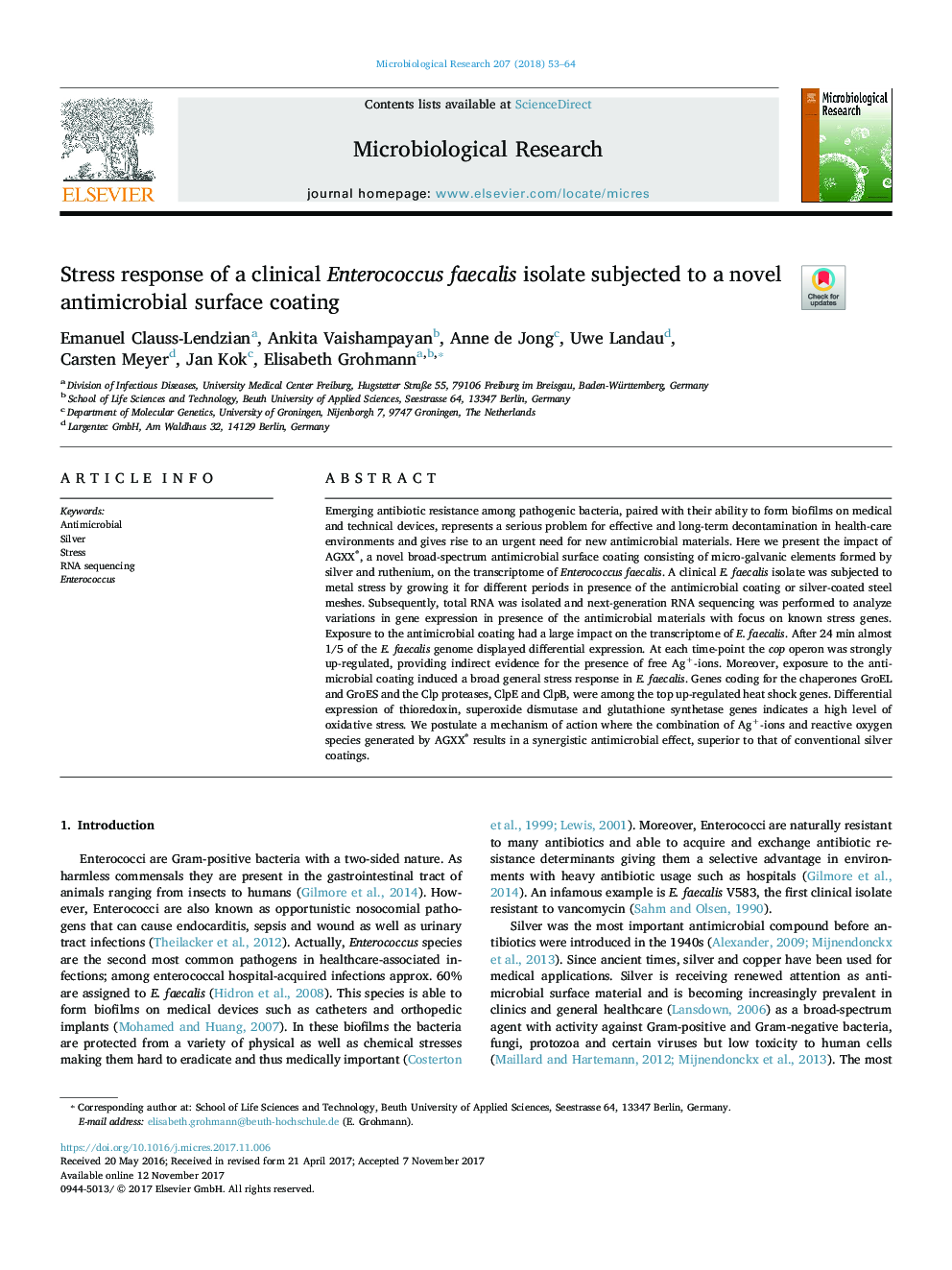| Article ID | Journal | Published Year | Pages | File Type |
|---|---|---|---|---|
| 8423079 | Microbiological Research | 2018 | 12 Pages |
Abstract
Emerging antibiotic resistance among pathogenic bacteria, paired with their ability to form biofilms on medical and technical devices, represents a serious problem for effective and long-term decontamination in health-care environments and gives rise to an urgent need for new antimicrobial materials. Here we present the impact of AGXX®, a novel broad-spectrum antimicrobial surface coating consisting of micro-galvanic elements formed by silver and ruthenium, on the transcriptome of Enterococcus faecalis. A clinical E. faecalis isolate was subjected to metal stress by growing it for different periods in presence of the antimicrobial coating or silver-coated steel meshes. Subsequently, total RNA was isolated and next-generation RNA sequencing was performed to analyze variations in gene expression in presence of the antimicrobial materials with focus on known stress genes. Exposure to the antimicrobial coating had a large impact on the transcriptome of E. faecalis. After 24Â min almost 1/5 of the E. faecalis genome displayed differential expression. At each time-point the cop operon was strongly up-regulated, providing indirect evidence for the presence of free Ag+-ions. Moreover, exposure to the antimicrobial coating induced a broad general stress response in E. faecalis. Genes coding for the chaperones GroEL and GroES and the Clp proteases, ClpE and ClpB, were among the top up-regulated heat shock genes. Differential expression of thioredoxin, superoxide dismutase and glutathione synthetase genes indicates a high level of oxidative stress. We postulate a mechanism of action where the combination of Ag+-ions and reactive oxygen species generated by AGXX® results in a synergistic antimicrobial effect, superior to that of conventional silver coatings.
Related Topics
Life Sciences
Biochemistry, Genetics and Molecular Biology
Biotechnology
Authors
Emanuel Clauss-Lendzian, Ankita Vaishampayan, Anne de Jong, Uwe Landau, Carsten Meyer, Jan Kok, Elisabeth Grohmann,
